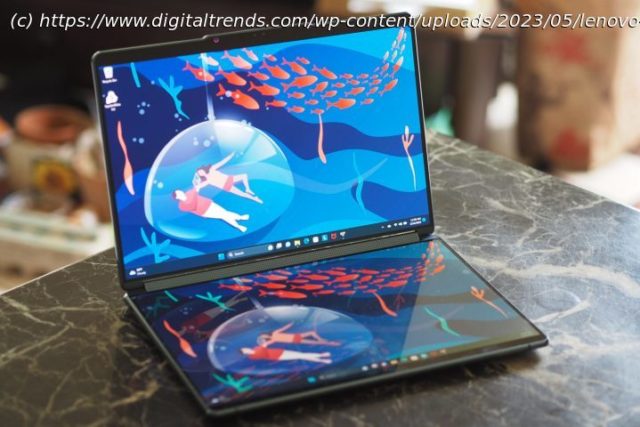The Lenovo Yoga Book 9i takes the dual-display concept and makes it work. There are a few glitches, but for the most part, there’s a ton of useful flexibility.
When it comes to work, many of us can’t survive without having multiple screens. Laptops with foldable screens like the ThinkPad X1 Fold are one solution to that problem, though they can be clunky and the tech is still relatively new.
But a dual-screen laptop? That’s a form factor with some potential, and the Lenovo Yoga Book 9i is the first device to take a serious stab at it. The Yoga Book 9i has two separate 13.3-inch OLED displays joined by the company’s unique – and proven – soundbar hinge, and it’s built for the same use cases as the foldable laptops. It’s still a bit fussy, with an origami stand and various dual-screen modes that aren’t all equally satisfying. But for multitaskers who don’t mind working the kinks out of their workflow, the Yoga Book 9i is an experiment gone right.Specs and configurations
There’s only one configuration of the Yoga Book 9i currently shipping, a $2,000 version from Best Buy with a Core i7-1355U, 16GB of RAM, a 1TB SSD, and two 13.3-inc 2.8K OLED panels. That would be expensive for a premium 13-inch laptop, but you’re obviously paying more for the extra display.Design
Unboxing the Yoga Book 9i is an unusual experience. Typically, I pull out a laptop and its power supply and I’m done. Maybe I’ll search for a pen if it’s included with a 2-in-1. The Yoga Book 9i box, though, had multiple levels, and I needed to keep digging to access all the various parts.
There was an extra box for the external keyboard and one for the origami stand, both of which were hidden underneath the laptop. There’s another foldable piece that magnetically snaps into a triangle, and I couldn’t figure out what it was for. At first, I thought it was to prop up the keyboard, but the angle is way too steep. And then, yes, there was also the pen to unbox, along with an included external mouse.
When closed, the Yoga Book 9i bears a strong resemblance to the 14-inch Yoga 9i Gen 8, especially from the sides. It has the same rounded edges and general profile, while being a bit smaller in width and height thanks to the smaller display. Its display bezels are similarly sized, and the soundbar hinge ties the two panels together.
Of course, open up the Yoga Book 9i’s and you’re faced not with a standard keyboard deck, touchpad, and palm rest, but rather a smooth expanse of glass that mimics the primary display. It’s an attractive and highly modern laptop when closed, and futuristic when open.
At 2.95 pounds and 0.63 inches thick, it’s also a reasonably thin and light laptop when considering the additional display. Both of those are a bit more than you’ll find in some other 13-inch laptops, though, such as the Dell XPS 13 Plus that’s 0.60 inches thick and weighs 2.71 pounds. Those are minimal differences, but then you need to factor in the weight of the external keyboard and stand. Once you do, then the Yoga Book 9i becomes a much bulkier package, and it’s also less convenient. You won’t want to forget or misplace any of the accessories, because the laptop is a lot less useful without them.
The Yoga Book 9i is a solidly built laptop, with an aluminum chassis and covers for both displays (which includes the bottom chassis cover). It feels as solid as any other premium laptop, and that’s particularly important here in creating confidence that the extra display is well-protected. I never got the impression that the laptop was fragile, although I’ll admit that placing the physical keyboard on the display did feel strange at first.
Connectivity is limited to three USB-C ports with Thunderbolt 4. There’s no audio jack, which follows a trend that I personally dislike. Wireless connectivity is up to date with Wi-Fi 6E and Bluetooth 5.






